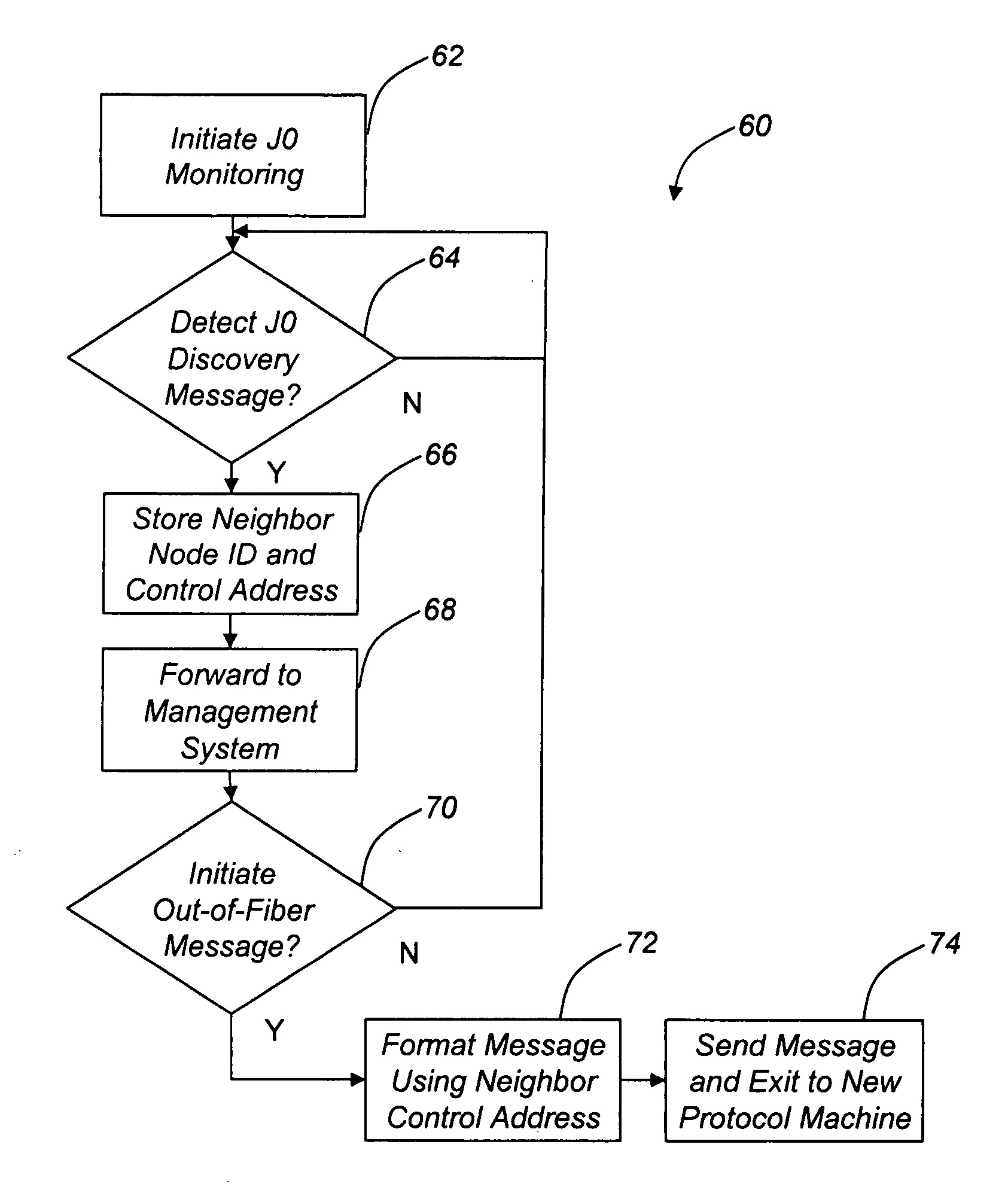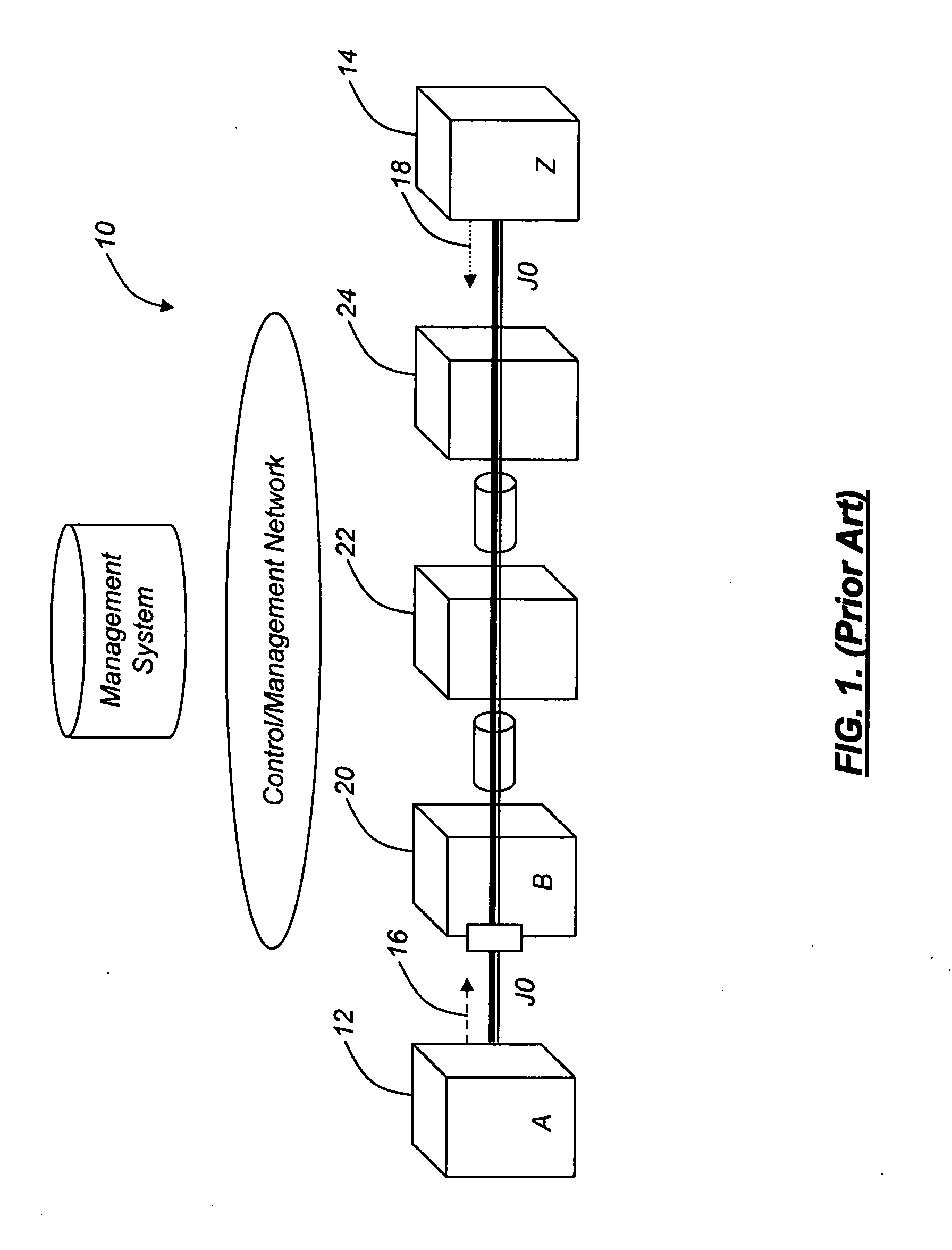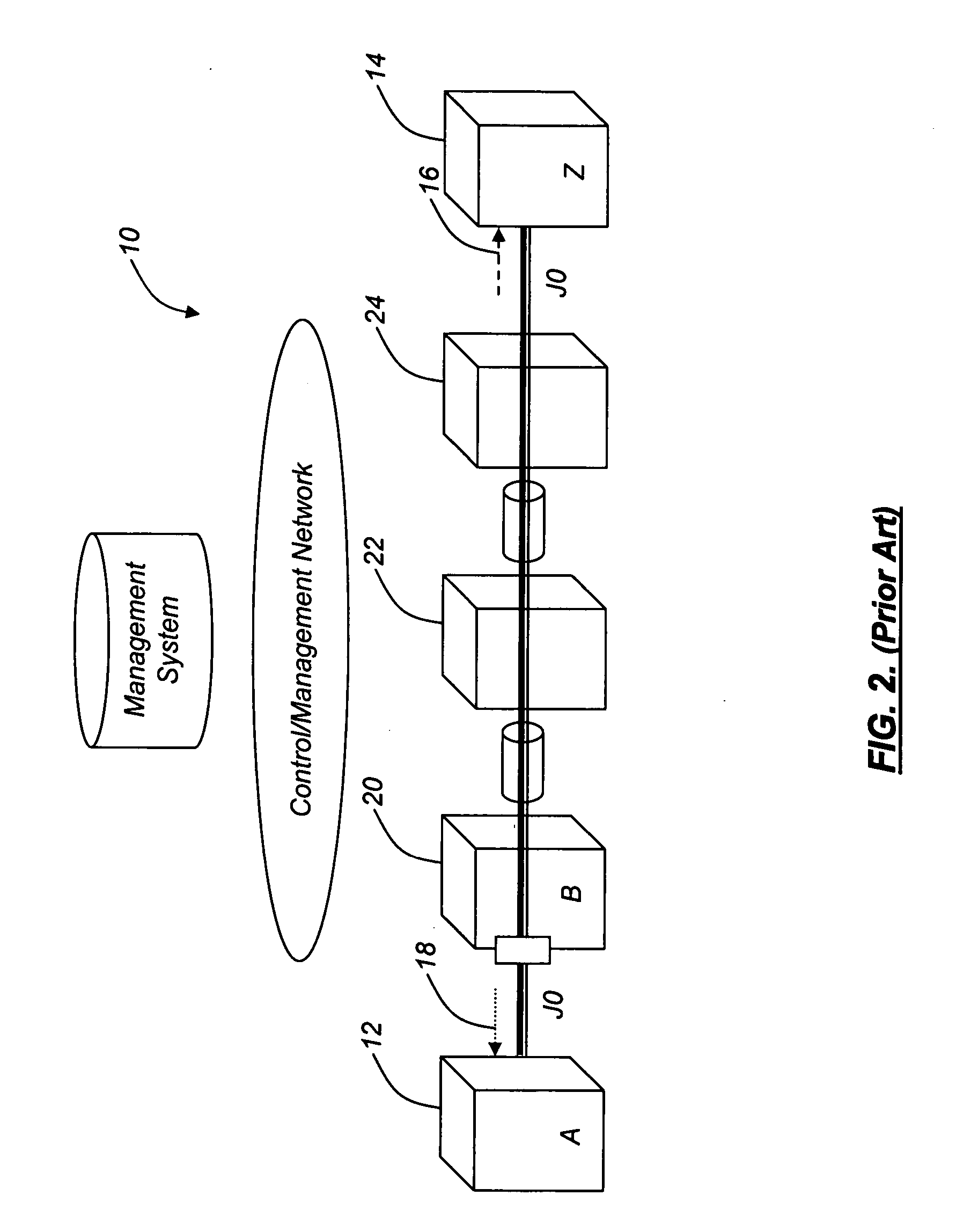Discovery of physically adjacent neighbor devices using a unidirectional in-band process coupled with an out-of-band follow-up process
a technology of in-band and out-of-band follow-up, which is applied in the field of physical adjacent neighbor devices, can solve the problem of not being able to perform bidirectional interaction using control overhead bytes, and achieve the effect of improving the speed and accuracy of network resource allocation
- Summary
- Abstract
- Description
- Claims
- Application Information
AI Technical Summary
Benefits of technology
Problems solved by technology
Method used
Image
Examples
Embodiment Construction
[0024] Referring to FIG. 1, illustrating a conventional in-band discovery process 10 that is designed to work between peer entities, as defined in the ITU-T standards and OIF implementation agreements, originating point A 12 and terminating point Z 14 generate discovery messages 16,18, respectively, that are sent over the J0 byte, DCC, GCC, or other control overhead in the connecting link. Intermediate nodes 20,22,24 that are transparent to this control overhead (i.e., that transport the discovery messages 16,18 to / from the originating point A 12 and terminating point Z 14 transparently) do not participate in the discovery process 10 and are not automatically discovered by originating point A 12 and terminating point Z 14, nor do they automatically discover that originating point A 12 and terminating point Z 14 are neighbors. They may, however, through IP identification, be capable of identifying neighbors at their own layer.
[0025] Referring to FIG. 2, also illustrating the convent...
PUM
 Login to View More
Login to View More Abstract
Description
Claims
Application Information
 Login to View More
Login to View More - R&D
- Intellectual Property
- Life Sciences
- Materials
- Tech Scout
- Unparalleled Data Quality
- Higher Quality Content
- 60% Fewer Hallucinations
Browse by: Latest US Patents, China's latest patents, Technical Efficacy Thesaurus, Application Domain, Technology Topic, Popular Technical Reports.
© 2025 PatSnap. All rights reserved.Legal|Privacy policy|Modern Slavery Act Transparency Statement|Sitemap|About US| Contact US: help@patsnap.com



